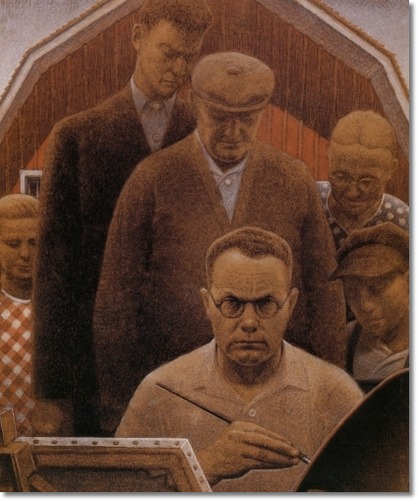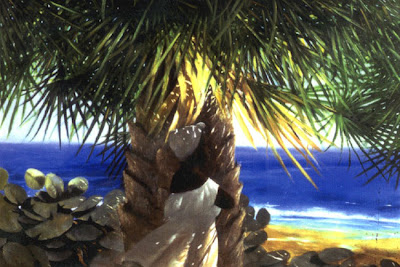When I was in primary school, my classmate used to laughed at my work when it comes to designing art projects. My design seems like no talent at all. But I trained myself by observing and patiently reading books and following the technique steps and tips. By the time I step-in in secondary school, I’ve seen the changes. I learned gradually, I remembered my English teacher told us that no matter how good you are in writing skills, without passion for art designing, it doesn’t work anymore. Now that I'm in college, I stopped and seldom do things which I am passionate about. But even if I can't do it anymore, my passion for art stayed in my heart, my mind and my hands forever.
I have read a book that's inspired me most. A book of art that promotes professional artist. and their artworks that's why I proudly posted it on my blog to share it to everybody, so enjoy reading.
Its because they satisfy human needs for display,
celebration, personal expression, and communication. We use to the visual arts
to enhance our visual environment, to express our innermost feelings, and to
communicate ideas.
~Art Talk
The Language of Art (Art Talk)
When you talk to someone or write a letter, you
communicate. You share your ideas and feelings with that person. You use words
either spoken or written to communicate a message.
You can also communicate through the
arts. They are languages for expressing ideasand feelings that every words
cannot explain. The arts talk in ways that go beyond simply describing
something or telling a story.
The art can cross the language
barriers of different countries. Someone who cannot speak English can
understand what is happening in the painting by Grant Wood,
Mikhail Baryshnikov may speak English with a Russian accent, but when he dances, the language of his movement is understood all around the world.
~Art Talk
 Meet The Artist:
Meet The Artist:
Mikhail Nikolaevich Baryshnikov
Born on January 27, 1948, nicknamed "Misha" is a
Russian American dancer, choreographer, and actor, often cited alongside Vaslav
Nijinsky and Rudolf Nureyev as one of the greatest ballet dancers in history.
After a promising start in the Kirov Ballet in Leningrad, he defected to Canada
in 1974 for more opportunities in western dance. After freelancing with many
companies, he joined the New York City Ballet as a principal dancer to learn
George Balanchine's style of movement. He then danced with the American Ballet
Theatre, where he later became artistic director.
For more details visit:
http://en.wikipedia.org/wiki/Mikhail_Baryshnikov
For more details visit:
http://en.wikipedia.org/wiki/Mikhail_Baryshnikov
The Elements and Principles
You know the people in our world speak many different languages.
Spanish, Swahili, Japanese, Hindi, French, English, and Apache are only a few
of the three thousand different languages that have been spoken on this planet
Earth.
Each language has its own
system of words and rules of grammar. To learn a new language you need to learn
new words and new set of rules for putting those words together.
The language of visual art
is also has its system. All of the objects you look at in a work of art are
made up of certain common elements and principles.
Being able to use the
language of visual art will help you in many ways. It will increase your
ability to yourself clearly when discussing art. It will even help you
improve your ability to produce artworks.
Sometimes the differences between the elements are not clear-cut. A line may be so wide that it looks like a shape, or an artist may manipulate light and dark values to indicate different surface textures.
After you have learned to recognize the elements of art, you will learn the ways in which the elements can be organized for different effects. When you learn a language, you learn the rules of grammar by which words are organized into sentences and paragraphs. Without these rules people would find it very difficult to communicate.
Visual images are also organized according to rules. The rules that govern artist organize the elements of art are called the principles of design. This have a strong influence on the way art communicates.
The principles you will learn about are rhythm, movement, balance, proportion, variety, emphasis, harmony, and unity. Look at the image below, and meet the artist, Julio Larraz has created a mysterious mood, by the way he has used the principles of design to organize the elements in his painting Papiamento.
- The elements of arts
A symbol
is something that stands for, or represents, something else. In a spoken
language words are symbols. The word chair stands for a piece of furniture that
has a seat, legs, a back, and sometimes arms. In the language of art we use
visual symbols to communicate ideas.
The basic visual symbol in the language of art are known as the elements of art. These are line, shape,
and form, space, color, value, and texture. The elements are the visual
building blocks that the artist puts together to create a work of art. No
matter how a work is made, it will contain some or all of these elements.Sometimes the differences between the elements are not clear-cut. A line may be so wide that it looks like a shape, or an artist may manipulate light and dark values to indicate different surface textures.
- The Principles of Design
After you have learned to recognize the elements of art, you will learn the ways in which the elements can be organized for different effects. When you learn a language, you learn the rules of grammar by which words are organized into sentences and paragraphs. Without these rules people would find it very difficult to communicate.
Visual images are also organized according to rules. The rules that govern artist organize the elements of art are called the principles of design. This have a strong influence on the way art communicates.
The principles you will learn about are rhythm, movement, balance, proportion, variety, emphasis, harmony, and unity. Look at the image below, and meet the artist, Julio Larraz has created a mysterious mood, by the way he has used the principles of design to organize the elements in his painting Papiamento.
Julio Larraz has created a mysterious mood, by the way he has used the principles of design to organize the elements in his painting Papiamento.
Julio César Ernesto Fernandez Larraz (born March 12, 1944) is a Cuban painter, sculptor, printmaker,
and caricaturist
known for his mastery of realism.
He was born in Havana, Cuba to a newspaper publisher. In 1961, he and his family left Cuba for Miami, Florida, later moving to Washington, D.C. and then to New York City. From 1964 to 1970 he studied with Burt Silverman, David Levine, and Aaron Schikler.
For more details visit:
http://en.wikipedia.org/wiki/Julio_Larraz
Source: Art Talk-Second Edition
Thanks for reading! My next post will be about media and processes of art.




